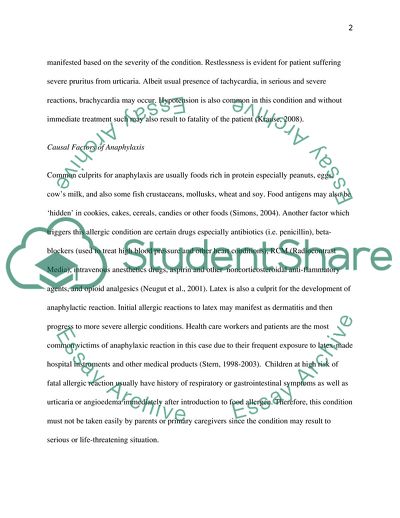Cite this document
(Anaphylaxis in Child Patient Case Study Example | Topics and Well Written Essays - 1750 words, n.d.)
Anaphylaxis in Child Patient Case Study Example | Topics and Well Written Essays - 1750 words. Retrieved from https://studentshare.org/health-sciences-medicine/1722433-clinical-assessment
Anaphylaxis in Child Patient Case Study Example | Topics and Well Written Essays - 1750 words. Retrieved from https://studentshare.org/health-sciences-medicine/1722433-clinical-assessment
(Anaphylaxis in Child Patient Case Study Example | Topics and Well Written Essays - 1750 Words)
Anaphylaxis in Child Patient Case Study Example | Topics and Well Written Essays - 1750 Words. https://studentshare.org/health-sciences-medicine/1722433-clinical-assessment.
Anaphylaxis in Child Patient Case Study Example | Topics and Well Written Essays - 1750 Words. https://studentshare.org/health-sciences-medicine/1722433-clinical-assessment.
“Anaphylaxis in Child Patient Case Study Example | Topics and Well Written Essays - 1750 Words”. https://studentshare.org/health-sciences-medicine/1722433-clinical-assessment.


